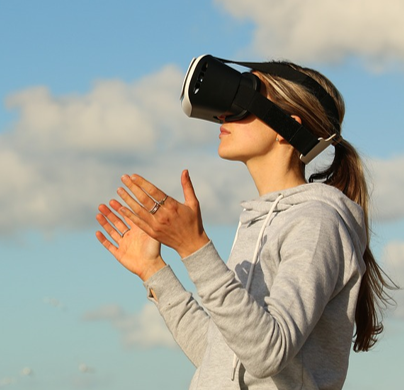
James Hankins shared further research into Share of Search at the EffWorks Conference. The original study (that involved Les Binet) was extended and the link deepened between change in Share of Search and change in Market Share.
Last year’s study was limited to the automotive, telco and energy categories – so this year’s analysis provides a valuable addition. Further extensions veer dangerously close to the limitations of Share of Search data, however.
A Complement not a Substitute
Share of Search (and an advertiser’s Brand Search volume in isolation) are intuitive, fully democratised measures of effectiveness. They are a powerful part of the business case for marketing – but not the whole story.
The value of Share of Search as a metric is derived from its role as a bridging metric between Share of Voice and Share of Market, where the effectiveness literature is much deeper. These metrics remain ferociously difficult to measure, however. In an age of much more tightly targeted advertising, Share of Voice has become almost impossible to measure on a cross-channel basis. However, as the acquisition channels of the typical brand have fragmented, and recurring revenue business models have proliferated, Share of Market measurement remains an equally challenging task.
The Business Case for Marketing Must be Made in £ Sterling
As such it is difficult to reverse engineer an investment plan or a credible share of market prediction from Share of Search analysis. As marketers we talk as far as possible in the language of pounds, shillings and pence in order to build credibility. And Share of Search is simply not a plausible metric upon which to structure an investment case.
Limitations
Though the research has been extended, there are still categories where the measure is inappropriate. Google Search covers a large share of commerce discovery but, increasingly, search is occurring outside of this net – with Amazon and Facebook platforms representing major primary touchpoints in the CPG and Fashion industries respectively.
Google Trends data is also sampled and rounded, undermining any attempts to attribute gains and losses back to specific marketing levers. With the sampling also undermining the sincerity of week-to-week or month-to-month shifts.
SoS does offer a powerful perspective on longitudinal marketing effectiveness and lowers the cost of measuring mental availability for brands. But it must be used as part of a holistic measurement framework as it represents a weak commercial case for marketing in isolation.

There have been several recent developments in the AV space, arguably the biggest of which is the recent launch of Sky Glass. Sky’s new range of certified carbon neutral TVs with built-in Wifi now offers customers the ability to stream content without a satellite dish.
Currently, Sky Glass is only available to customers who have been with Sky for 8+ years, but a waiting list is available to everyone else, with wider release expected soon. The TVs themselves can be bought outright or with interest-free monthly payments; a clincher to entice those not willing to foot the bill upfront. Of course, once you throw in Sky Sports, Film, Puck and HD packages, this monthly fee can ramp up to over £80 for the full Sky experience.
At a time when subscription fatigue is seeing many cut down on their monthly subscriptions, this may be a little too much for some to stomach. On the other hand, Sky Glass will completely revamp how viewers watch and record their favourite shows across multiple content suppliers. Streaming directly from Sky via the Cloud means that customers will no longer have recordings saved directly to a hard drive. Instead, Sky Glass will align Playlists that can span several different suppliers to offer a more holistic viewing experience, thus housing content from multiple sources – like Channel 4, Sky and ITV – in one, easy to access, personalised Playlist. It will also house apps for Netflix, Amazon Prime and other digital offerings.
The inclusivity tactic should keep Sky customers within the Sky interface, while delighting the networks. ITV and Channel 4, for example, have recently struck deals with Sky wherein their previously limited BVOD inventory has now expanded to include all their content.
An interesting move that will potentially please advertisers, but may irk some Sky customers, is that viewers will not be able to fast-forward through the ads during commercial content like they could do historically with Sky+/Q recordings. There will instead be an additional £5 “Ad-Skipping Add-On” fee, a feature akin to All4+ and ITVHub+.
Another development to watch is taking place at Amazon, with the launch of their new streaming channel IMDbTV. The channel sits within the Amazon Prime app on its own carousel and is entirely free and ad-supported. It’s clear that Amazon have acknowledged the so-called ‘subscription fatigue’, favouring advertising spends to fund the platform over subscription costs.
Advertisers can think of it as an additional BVOD/CTV channel, traded on a CPM metric, mid-roll only, and with the ability to run tags (something they can’t do with Amazon’s live sport content). The channel gives advertisers the opportunity to access lighter-TV and SVOD viewers, as well as having consistent presence on Amazon, as opposed to just their live Premier League and Rugby Prime Video offerings.
Whilst it’s early days for both Sky Glass and IMDbTV, it’s clear that these evolutions will influence the way we target viewers of Broadcast content in the future.

The release of new research from Peter Field has re-ignited the debate on this marmite marketing topic.
Structured Debate
The research (released as part of the IPA’s EffWorks conference) was a first attempt at adding rigour to an often unstructured and emotionally charged debate. Indeed, it’s likely that the most valuable contribution of this research is in providing a working definition to the debate.
Brand Purpose: “A commitment articulated by a commercial brand or its parent company to goals other than improved profits or products, involving contribution towards one or more positive social impacts in the fields of health, the environment, human development, sustainable business practices, or other similar areas.” (Peter Field, 2021)
Previous purpose debates have been stunted by competing interpretations. For some, purpose exists as a subfield of brand management and must be part of a long-term growth strategy; for others, it is simply purpose for purpose’s sake.
Sharp Critique
The broader effectiveness community has historically been critical of Brand Purpose initiatives. Byron Sharp and Mark Ritson have led the charge here – labelling Brand Purpose advocates as ‘apologists for marketing.’ Indeed, Sharp and Richard Shotton have specifically criticised Field’s research – with Shotton labelling the methodology as ‘flawed’. While there is clear selection bias in Field’s study (this is recognised up front) criticisms of the research miss a more important point. In an age of increased corporate transparency and micro-activism, Brand Purpose is likely to have increased relevance. Well executed campaigns represent a route to more sustainable Brand Equity in a more socially conscious era. Despite this, there are almost no academic or commercial studies on Purpose; and as such Field’s study is both a valuable contribution and a stimulus for further work.
The research clarified the opportunity for Purpose campaigns to burnish the Employer brand – improving reputation among partners, employees and investors far more efficiently than non-purpose campaigns. The analysis also highlighted the high variability of B2C returns from Purpose campaigns. Surely the key lesson of the research is for marketers to tailor their message and targeting more heavily towards relevant B2B audiences and Internal Comms.
Nascent but Prescient
Field’s research is an important first step. The depth and breadth of the cases analysed are less than ideal, and the research has not unequivocally demonstrated either the imperative or folly in investing in purpose campaigns. Nevertheless, it does offer valuable guidance on where to focus efforts and recognises gaps in the research. In a more socially conscious age and, with the real and urgent threat of climate change, it is wise for brands to plot routes to profit with fewer externalities. Brand Purpose campaigns can play an important role in stimulating and illuminating positive changes to corporate behaviour.

Metaverse or Metaworse? Zuckerberg is facing more criticism as he rebrands Facebook to Meta – taking it from a social media platform to a ‘Metaverse’ business that will hire over 10,000 new employees across Europe.
Zuckerberg announced the rebrand this week, but ‘Metaverse’ has been his buzzword for a while, having described it as the future of Facebook and a whole new economy for this generation. The Metaverse itself is not a Facebook creation, however, and is a term many in the gaming world already know. Games such as Animal Crossing, Minecraft and Fortnite have already entered this dimension aided by VR and AR. The term has been used in sci-fi for decades, usually to describe a dystopian universe. In fact, the term was first coined in 1992 by Neal Stephenson in his sci-fi novel Snow Crash. The Matrix is a metaverse.
Of course, this announcement coming in the middle of a PR storm over Facebook’s content regulation flaws has led many to vocalise the potential threat to society the Metaverse will bring, given the sheer amount of data there would be to regulate when more users own its AR and VR tools. Frances Haugen, the ex-Facebook employee who is now helping to form the online safety bill to regulate social media, said “Wow, do you know what we could have done with safety if we had 10,000 more engineers?” when she heard the news of the impending rebrand and the hires to support it.
Whether Zuckerberg is at the helm or not, The Metaverse is coming, and it’s going to change the way we live, work, date, shop, and more. And just because Zuckerberg is the most vocal about it in the media, doesn’t mean other companies aren’t building their offerings around the Metaverse also. It’s likely to create whole new industries and commerce opportunities. There’s been talk of the ability for governments to get involved – can they create public spaces, such as parks, in the Metaverse just like they do in the real world? As tech writer Mike Elgen, said, “the concept of a shared virtual world has been around and in the works for decades, from thousands of companies and universities. By publicly obsessing about it, Zuckerberg hopes to be associated with it as the leader”.
He’s not leading the way yet, though, with the social gaming industry already offering integration opportunities for brands to reach their hyper-engaged users. We’ve seen Gucci, Vans, Stella McCartney and others take these on. Crypto Fashion week ran a Meta Gala event in September, where avatars modelled virtual outfits to be auctioned off, with luxury fashion house Karl Lagerfield submitting an avatar for sale.
But from an ads point of view, the new Facebook has the potential to hold the monopoly with its wealth of user data that has been used by most brands as a core part of their marketing strategies for years. Its ad offering is affordable and easy to understand and activate for the smallest and largest of businesses. It’s likely to succeed in creating this in the Metaverse also, and this time, we hope with more interconnectedness across platforms than the Walled Garden of Facebook currently provides. Zuckerberg himself has expressed enthusiasm for this – he’s claimed to have invested £50m into a non-profit to ensure it’s built open and free. We’ll no doubt be hearing this buzz word more, and while Metaverse won’t appear overnight, now is the time for brands to start considering it as part of their future.

One of the flagship reports released as part of the EffWorks Conference was the IPA’s Culture Monitor – a wide sweeping survey of marketing professionals to assess the state of the effectiveness nation.
Though the report found effectiveness culture to be in good health, there is likely to be significant selection bias in the results. Those with strong effectiveness cultures are more likely to respond to a survey assessing the same. Despite this, there may be some lessons to be learned from those brands and agencies operating at the top of the effectiveness game.
The Value of Roadmaps
One standout recommendation was for organisations to create effectiveness roadmaps to further improve their cultures. Effectiveness rarely has a single point of accountability in any organisation, so a centralised, multi-year plan is a major accelerant of effectiveness culture.
Start with an Audit
Introspective questioning is the logical starting point when creating an effectiveness roadmap. The Report recommends structuring this around 4 pillars.
- Focus
What does marketing effectiveness mean to the organisation/agency and what are the expectations from an effectiveness approach?
- Process
Is there a clearly defined process and what does it look like?
- Data, Tools, Measurement
Do you have the data to support the meaningful measurement of marketing activity and, if not, how are you going to get it? How do you intend to show the value created from marketing investment and increase the impact on marketing decision-making with this evidence?
- People
Is there a focus on continuous learning and development – and do you learn both from success and failure?
It’s a shared journey
As an agency we believe that in the volatile post-pandemic environment, where distribution networks and advertising consumption have been disrupted significantly, it is crucial for advertisers and agencies to take this journey together.

Back in May, What’s Hot reported on the ridiculous rise of non-fungible tokens, or NFTs, the digital, blockchain-based technology which had continually hit the headlines for a series of eye-popping sales. From a token of the Nyan Cat meme selling for nearly $600,000, to a copy of the first tweet going for $2.9m, the world appeared to have completely lost its marbles; such that, by the time a .JPG file sold for the earth-shattering amount of $69.3m, it almost felt like old news.
Since then, NFT mania has shown few signs of subsiding. In Q3, NFT sales soared to more than $10bn, an eightfold increase on Q2 2021. Thus, it is little surprise that a plethora of brands have been investing in the technology, from Asics to Team GB. So, how have brands utilised the space?
An NFT – just like limited edition trainers or mint-condition comics – derives its value from scarcity; the fact that the buyer can own something few others possess. This proved tantalising to legacy brands, including Coca-Cola, who utilised the market to re-issue iconic memorabilia from its past.
And it’s not just memorabilia. As the Metaverse grows – the virtual environments often lauded as the future of the internet, having succeeded NFTs as 2021’s latest un-understandable craze – the prospects for digital goods have risen, with a host of fashion brands racing to produce digital counterparts to their clothing. Before long, gamers could be sporting a virtual Versace in Fortnite.
NFTs have also been suggested as solutions to a host of other issues. After Kings of Leon made more than $2m in sales of their latest album through a special NFT release, NFTs were mentioned as a counter to years of falling artist revenues due to streaming services. Industries like air travel have also been floated as services which could benefit from a switch to NFT-based ticketing.
Critics will point out that, as it stands, no such benefits exist, and that brands who have thus far entered the NFT space have taken a rather clichéd, how-do-you-do-fellow-kids approach to engaging with consumers. But while that argument does have merit, the fact that brands haven’t quite yet figured out how best to work with NFTs doesn’t mean the industry is doomed to fail: one only has to think back to early-era brand Twitter to know that clunky comms can rapidly evolve.
What should cause concern is the vast environmental impact of NFTs. The Ethereum platform it uses for trade requires 48.14 kilowatt hours of energy for every transaction, enough to power the average UK home for five days. In an era where Gen Z increasingly seeks sustainable alternatives when purchasing goods, the carbon footprint of NFTs seems incredibly at odds with that ideal.
Eventually innovators will find ways to reduce these environmental costs, just as creatives will get better at finding original ways to use the fledgling technology. Until then, brands must tread carefully when first foraging into the NFT market. Despite promises to offset carbon emissions, a number of NFT projects have been scrapped following a backlash from concerned consumers.
Despite this, NFTs are not going away anytime soon, as the lines between real and virtual blur. The question is no longer whether brands will join the market, but what they plan to do with it. As for whether NFTs will stick around for good, or join the graveyard of obsolete technologies, only time will tell. Put on your Google Glasses and fire up that HD DVD Player, it’ll be a bumpy ride.

From the moment John Lewis released its much-anticipated Christmas advert last week, the bitter air of late autumn was filled with familiar conversations. “I swear it gets earlier every year” pleads the man in the coffee shop as he collects his festive cup. “It wasn’t like this in my day,” your granny assures you, as she knits your yearly reindeer sweater.
It’s true: Christmas season is upon us, in media circles at least. The likes of Boots and M&S joined John Lewis in launching their campaigns in early November, while online retailer Very opted for an even earlier start, telling a tongue-in-cheek tale of a family jumping the gun on festive celebrations – much to the surprise of calling trick-or-treaters.
But this is no new phenomenon. In 2015, Aldi and Lidl both released their seasonal campaigns the day after Halloween. The cause – then, as now – was a wealth of data showing consumers planning their gift shopping earlier to beat the forthcoming rush. There’s even a term for it: the Christmas creep, and experts claim it dates back to the 19th century.
So, are early Christmas campaigns simply something we all love to moan about? the7stars’ Lightbox Lowdown found that a majority (51%) of Brits think Christmas ads start too early, with just two-in-five looking forward to seeing them. This year, however, the strategic reasons for launching such early campaigns are three-fold. Firstly, supply chain shortages are still fresh in Britons’ minds, prompting many to buy early; by mid-October, one-third had done at least some of their Christmas shopping, according to YouGov. Furthermore, with many of the UK’s near-neighbours, including the Netherlands, implementing fresh restrictions on retail to curb rising coronavirus cases, many British shoppers are preparing for the worst. Lastly, as reported in the7stars Christmas Trends 2021, 36% of Brits plan to spend more on Christmas this year to make up for last year’s lost time, with early campaigns a means to captivate their attention.
While the timing of this year’s festive offering is expected, some critics have been disappointed by the content of campaigns rolling off the production line. Danny Rogers, editor-in-chief of PRWeek, noted that the lack of sustainable overtones in the current crop of campaigns was a strategic own-goal, given their release during the COP26 negotiations on home soil.
Whether the relative latecomers this year will opt to go bolder on sustainability or other topical consumer themes remains to be seen. But, if one thing is certain, it’s that the wave of cheer hitting our screens is just getting started – as are the inevitable cries of it all being forced upon us. Bah, humbug.

The metaverse…what is it and why should brands care?
The term “metaverse” is everywhere right now, it’s even been coined as the ‘future of the internet’. But defining exactly what the metaverse is can be difficult and there’s one simple reason for this: it doesn’t necessarily exist. Facebook describe it as ‘a set of virtual spaces where you can create and explore with other people who aren’t in the same physical space as you’. Put simply, it’s the internet brought to life. A virtual world where users can create an avatar, interact with one another as well as interacting with brands and experiences. Advancements in AR & VR technologies have accelerated the growth of the metaverse, allowing users to connect easily from their physical world, wherever they are. The metaverse can constitute anything from a virtual shop front where users can experience online shopping as if they were truly in a store, to going to a Travis Scott concert in the game Fortnite with 10 million other users.
Facebook have taken a considerable interest in the metaverse and have already revealed their early ambitions about rebranding as a metaverse company, including developments in the physical tech required such as VR headsets or Oculus glasses. Mark Zuckerberg recently said “We believe that this is going to be the successor to the mobile internet.”
However, not everyone is fully on board with the metaverse yet, according to the7stars latest October Lightbox Pulse, with 86% of people either having not heard of the metaverse before or saying that they didn’t understand it. On the other hand, 28% of Gen Z think that the metaverse will be the future of the internet. Many brands have already started launching in this space, for example Balenciaga have released a dystopian game called Afterworld where they hosted a virtual fashion show to launch their Autumn 2021 collection. Brands, especially those that have a Gen Z or young Millennial audience, can embrace this movement to make the metaverse more real and accessible to everyone. Only time will tell how these audiences will interact in this metaverse and how brands will exist in a meaningful and valuable way within it. Watch this ‘metaverse’ space….
Sources:
Lightbox Pulse, October 2021, the7stars



Recent Comments